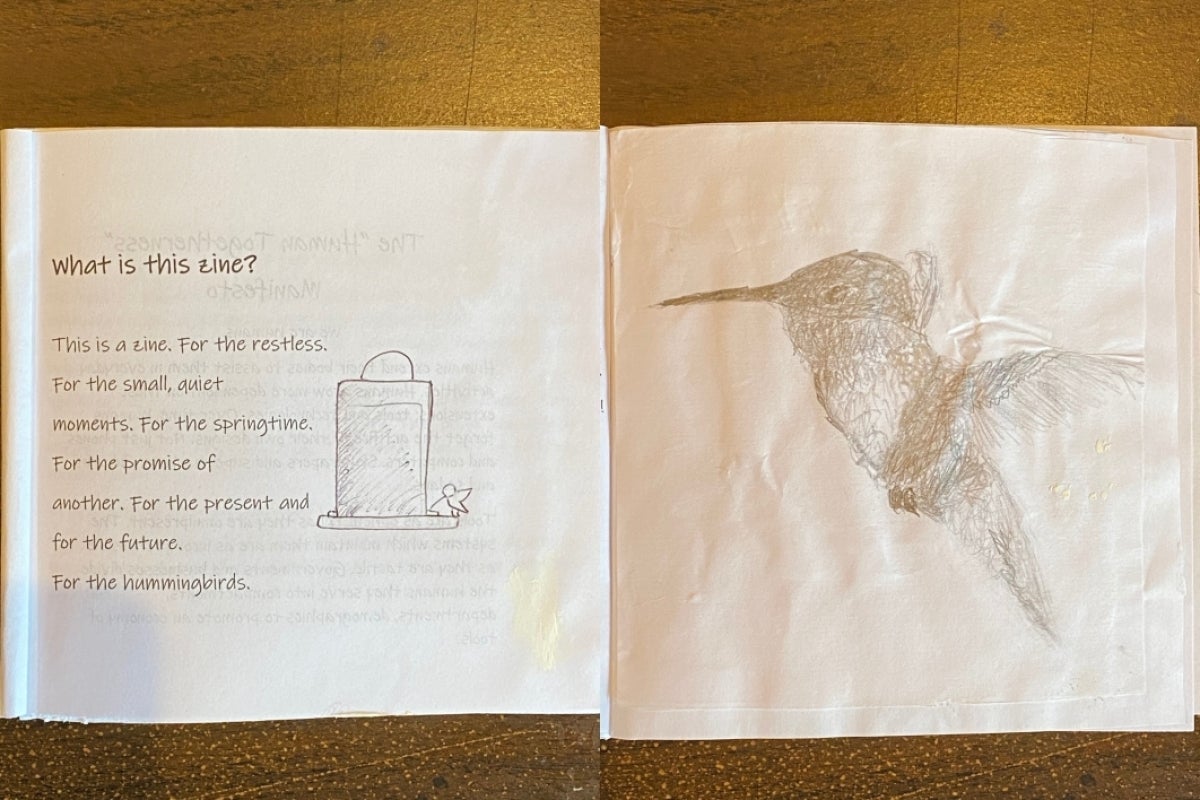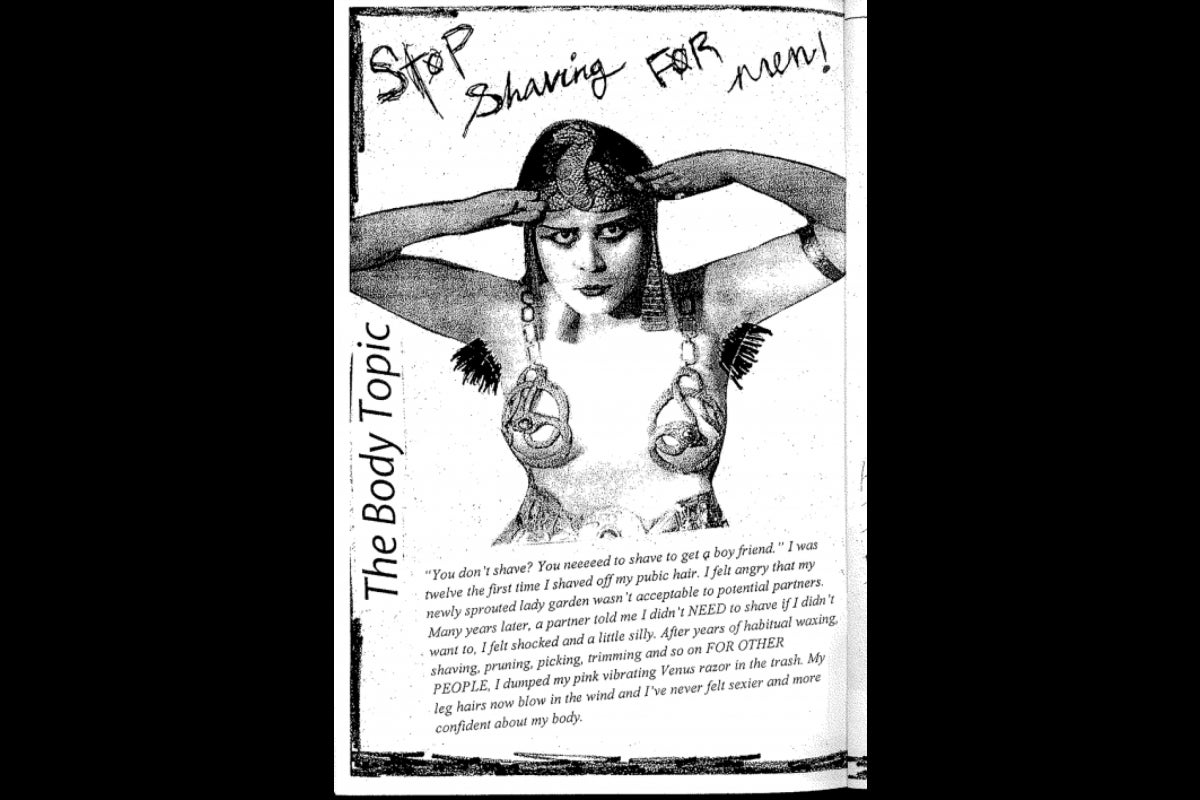The power of print

Rachel Leket-Mor, an associate librarian in Hayden Library, gives a zine presentation in Professor Heather Green’s spring 2019 class, “Time, Narrative, and the Multiple,” at the Herberger Institute for Design and the Arts. Photo courtesy of Rachel Leket-Mor
Most of us find ourselves fully immersed in the digital age. Books are replaced with tablets, newspapers articles are delivered via an app rather than your doorstep, the junk mail once found in your mailbox is now in your email’s spam folder.
While many areas of communication have been changed in the age of the internet, one art form remains relatively untouched: zines. Short for “magazines,” zines are independent, small press books that have existed in our culture since before America achieved independence from Great Britain.
Jason Bruner, an associate professor in Arizona State University's School of Historical, Philosophical and Religious Studies, is in the process of creating a zine focused on Phoenix’s canal system and said zines offer an opportunity of creative control and a small scale to work with.
“They don't have to be exhaustive explorations either visually or textually; they can have a clear perspective that doesn't need to be the end-all, be-all of whatever the topic is, but can capture a moment, capture a critique, perception or a place in something like a publishable snapshot,” he said.
Rachel Leket-Mor, an associate librarian in Hayden Library, began collecting zines for ASU a few years ago and said the publications offer an outlet for individuals to speak for artistic freedom, social injustice, gender equality or for simply speaking one’s mind.
“Diversity is so important in library collections,” Leket-Mor said. “This is the main reason behind creating the collection, because we need more diversity and representation for underrepresented groups in our community. Zines, because they’re such a creative, individual outlet for anything that’s on your mind, are a beautiful example of a way to represent our ASU community.”
ASU’s open-stacks zine collection currently contains about 50 items, though they are not available for checkout at this time.
In addition to the open-stacks collection, Leket-Mor has worked with The College of Liberal Arts and Sciences’ Institute for Humanities Research to curate a collection of zines that are representative of the Southwest in general, and Arizona specifically.
Ron Broglio, co-director of the institute and a professor of literature in The College’s Department of English, said he was initially inspired to get more involved with zines after he discovered the Joshua Tree-based Desert Oracle zine.
“It was very lo-fi and quirky, filled with facts and fabulation, and I thought, ‘Wow, this little thing produces a sense of wonder about histories, cultures and the landscape of the desert Southwest,’” he said. “And wouldn't it be great to be able to create something like that at ASU.”
Inspired, Broglio worked with Assistant Professor Heather Green in the School of Art to create opportunities for faculty to showcase their desert-related projects in zines for the Desert Humanities, as well as teach students the art of zine-making in ENG 345 – Making Zines for Social and Environmental Issues this past semester.
“Pedagogically, zines help students to think about a little book as a physical object,” he said. “Because they have to put one together, they begin to think about things like paper and binding and layout and how those physical markers help to change meaning through style. Just like the clothes we wear: You get different styles, different variations. The same would be true here.”
Witnessing the ASU community showcase their individuality and embrace the zine format has been special for Leket-Mor.
“Nowadays it's so easy to write a tweet in two seconds and post on social media or share digital creative work," she said. “The fact that there are young people who believe in the power of the printed matter is heartwarming.”
More Arts, humanities and education

Honoring innovative practices, impact in the field of American Indian studies
American Indian Studies at Arizona State University will host a panel event to celebrate the release of “From the Skin,” a…

ASU alum's humanities background led to fulfilling job with the governor's office
As a student, Arizona State University alumna Sambo Dul was a triple major in Spanish, political science and economics. After…

ASU English professor directs new Native play 'Antíkoni'
Over the last three years, Madeline Sayet toured the United States to tell her story in the autobiographical solo-…


